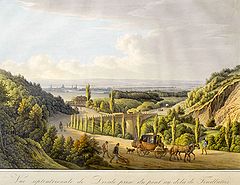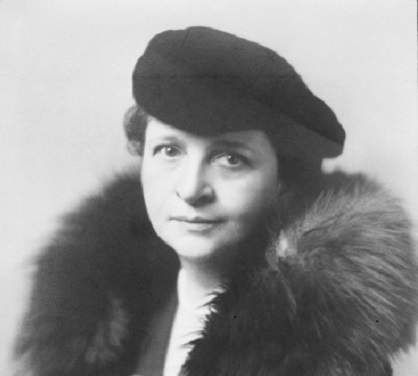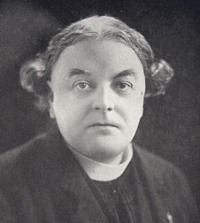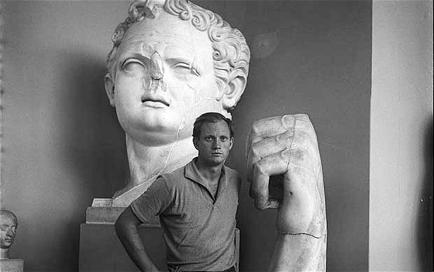|
presents THIS DAY IN GAY HISTORY based on: The White Crane Institute's 'Gay Wisdom', Gay Birthdays, Gay For Today, Famous GLBT, glbt-Gay Encylopedia, Today in Gay History, Wikipedia, and more …
Collected by Ted April 10 [{(o)}]|[{(o)}]|[{(o)}]|[{(o)}]| [{(o)}]|[{(o)}]
1750 – James Ogilvy, the 7th Earl of Findlater and 4th Earl of Seafield (d.1811), was an accomplished amateur landscape architect and philanthropist of the late eighteenth century. He promoted the English landscape garden in mainland Europe, where he spent lavishly on public works and "improvements of the scenery." Ogilvy's decision to live abroad was a not uncommon choice of wealthy Englishmen and Scotsmen with same-sex sexual interests in the eighteenth century. In Europe his discreet practice of homosexuality was accepted by society as an unacknowledged quid pro quo for his sponsorship of public improvements. After his death, however, scandal erupted when he was outed by his own relatives in Scotland. In 1770, after his father's suicide, Lord Findlater inherited his family's vast estates. The estates in Scotland yielded about £40,000 per year, an enormous sum that gave him the freedom to travel and to reside abroad. In 1779, Findlater married Christina Teresa Murray in Brussels, but two years later, he left her and lived abroad for most of the rest of his life, especially in Dresden and Carlsbad. Findlater's decision to relocate to Europe was no doubt strongly influenced by his homosexuality. He may indeed have been unofficially banished for his "unnatural transgressions." In any event, like his younger contemporary George Gordon, Lord Byron, among many others, Findlater realized that he could not live the life he desired in the United Kingdom. In 1808 Findlater met the German poet Johann Wolfgang von Goethe in Carlsbad. Goethe would still tell anectodes about him many years after his death in 1811. Despite his association with Carslbad, Lord Findlater's primary investment abroad, however, were the vineyards at Loschwitz near Dresden. Initially motivated by his interest in wine, he managed to acquire five of the eight major vineyards in the region. With the help of Johann Georg Fischer, his close companion, confidant, secretary, and lover, Findlater began, by the end of 1805, to turn this site into a beautiful landscape garden with precious shrubs and trees on its terraces. Later, Findlater commissioned the architect Johann August Giese of Gotha to construct a magnificent palace in neoclassical style. It was subsequently replaced by the Lingner Palace, but in its time it was considered "the most beautiful residence in Dresden." Lord Findlater died on October 5, 1811, soon after construction of his palace was completed. Findlater's sole heir was Johann Fischer, who had already received the Eckberg estate and the manor of Helfenberg from him. Fischer, whose wife divorced him when she surmised the nature of his attachment to Findlater, was subsequently sued by the aristocrat's Scottish relatives. They went to court claiming that the bequest to Fischer had been made in pursuit of lewdness. Their suit, which created a scandal, was successful. They were able to keep the estates in Scotland as family property but at the expense of Findlater's reputation in the United Kingdom. When Fischer died years later, at the age of 87, he was buried in Findlater's tomb at the cemetery around Loschwitz Parish Church.
1880 – Frances Perkins Wilson (born Fannie Coralie Perkins; d.1965) was the U.S. Secretary of Labor from 1933 to 1945, the longest serving in that position, and the first woman appointed to the U.S. Cabinet. As a loyal supporter of her friend, Franklin D. Roosevelt, she helped pull the labor movement into the New Deal coalition. She and Interior Secretary Harold L. Ickes were the only original members of the Roosevelt cabinet to remain in office for his entire presidency. During her term as Secretary of Labor, Perkins executed many aspects of the New Deal, including the Civilian Conservation Corps, the Public Works Administration and its successor the Federal Works Agency, and the labor portion of the National Industrial Recovery Act. With the Social Security Act she established unemployment benefits, pensions for the many uncovered elderly Americans, and welfare for the poorest Americans. She pushed to reduce workplace accidents and helped craft laws against child labor. Through the Fair Labor Standards Act, she established the first minimum wage and overtime laws for American workers, and defined the standard forty-hour work week. She formed governmental policy for working with labor unions and helped to alleviate strikes by way of the United States Conciliation Service. Perkins resisted the drafting of American women to serve the military in World War II so that they could enter the civilian workforce in greatly expanded numbers. She achieved statewide prominence as head of the New York Consumers League in 1910 and lobbied with vigor for better working hours and conditions. Perkins also taught as a professor of sociology at Adelphi College. The next year, she witnessed the tragic Triangle Shirtwaist Factory fire, a pivotal event in her life. It was because of this event that Frances Perkins would leave her office at the New York Consumers League and become the executive secretary for the Committee on Safety of the City of New York. In 1913, Perkins married New York economist Paul Caldwell Wilson. She kept her birth name, defending her right to do so in court. The couple had a daughter, Susanna. Both father and daughter were described by biographer Kirstin Downey as having "manic-depressive symptoms". Wilson was frequently institutionalized for mental illness. Perkins was the sole support for her household. Prior to moving to Washington, DC, Perkins held various positions in New York State government. She had gained respect from the political leaders in the state of New York. In 1919 she was added to the Industrial Commission of the State of New York by Governor Alfred Smith. In 1929 the newly elected New York governor, Franklin Roosevelt, appointed Perkins as the inaugural Commissioner of the New York State Department of Labor. In 1933, Roosevelt, now President, appointed Perkins as Secretary of the Department of Labor, a position she held for twelve years, longer than any other Secretary of Labor. She became the first woman to hold a cabinet position in the United States and thus, became the first woman to enter the presidential line of succession. With few exceptions, President Roosevelt consistently supported the goals and programs of Secretary Perkins. Perkins had made many adjustments early in her career in order to fit herself into the male-dominated arena of politics. She had changed her name (from “Fannie” to Frances) and also her style of dressing (to remind men of their mothers!) But after her Cabinet appointment, she found herself in a Catch-22 situation. It was expected that Cabinet members would all have wives to run their households and to host the social gatherings where the real business of government frequently was conducted. Perkins could not be "one of the boys," and, at the same time, conform to the social protocols of a Washington hostess. Mary Harriman Rumsey came to the rescue. She rented a three-story house in Georgetown and invited Frances to become her "roommate." History notes that the two were far more than roommates, and that Mary was far more than a typical Cabinet wife. Mary Rumsey was the daughter of a railroad tycoon, and she had grown up on a twenty-thousand-acre estate in upstate New York, where she later supervised the six hundred employees.She had homes on Long Island and also in Virginia. Her dinner parties with Frances were legendary. Mary died suddenly and unexpectedly on December 19, 1934, from complications resulting from a fall from a horse. At the time of her death, Frances was in middle of the fight for Social Securty, and Roosevelt had given her a Christmas deadline for her Cabinet committee to complete their work. Because of the closeted nature of her relationship with Rumsey, only a few very close (and lesbian) friends could acknowledge the degree of her loss. As one of these friends noted, "You are going through one of those tremendously alone experiences, yet lacking in importance outside yourself." Frances would also lose their home, as it was Rumsey who had paid the lion’s share of the rent. Any attempt on the part of Rumsey to provide for Perkins financially would have raised questions on scandal-mongering Capitol Hill. So, the same week her partner died and she was facing the imminent loss of her home, Perkins called the members of her committee to her home, set a large bottle of Scotch on the table, and told the men that no one went home until they finished the work. As a result of that night, and the woman whose activism was a living memorial to her partner’s death, millions of Americans have been able to retire, and even more have been able to survive.
1880 – On this date the eccentric English author and clergyman Augustus Montague Summers was born (d.1948). He is known primarily for his scholarly work on the English drama of the 17th century, as well as for his idiosyncratic studies on witches, vampires, and werewolves, in all of which he professed to believe. He was responsible for the first English translation, published in 1928, of the medieval witch hunter's manual, the Malleus Maleficarum. Despite his conservative religiosity, Summers was an active member of both the British Society for the Study of Sex Psychology, to which he contributed an essay on the Marquis de Sade, and of the Order of Chaeronea, a secret society which cultivated a homosexual ethos. Summers' Gay interests also show in his edition of the poems of the sixteenth century poet Richard Barnfield, which partly are openly homosexual.
1934 – Kin Hoitsma was an American fencer born on this date (d.2013); Hoitsma competed in the individual and team epée events at the 1956 Summer Olympics. He later became a teacher. He was a long time lover of photographer and designer, Cecil Beaton. Kinmont Trefry Hoitsma was born in Cooperstown, New York, the son of a salesman in the paper trade, in turn the son of a cattle rancher in Wyoming who had emigrated from Holland. The family was peripatetic, moving between the East Coast and the Midwest. Kin graduated from Shaker Heights High School in Ohio, and went on to Princeton University where he studied Greek and majored in French. In 1956 he competed in the Ivy League Fencing Championship. He went on to the collegiate finals, and in November that year, aged 22, fenced for the United States at the Melbourne Olympics. The men’s epée team did not make it beyond the first round, though in the individual men’s epée Hoitsma reached the quarter-finals. On his way back from the Games Hoitsma stopped off in San Francisco, and settled there, studying Architecture and Art History at Berkeley before taking a variety of jobs. It was during this period that he met Beaton. Hoitsma met Beaton in 1963, when the photographer was in Hollywood creating costumes and sets for the film of My Fair Lady. One weekend in March, Beaton escaped to San Francisco, where he wound up at a bar called the Tool Box and met the handsome, 6ft 3in Kin Hoitsma. An unlikely friendship formed, and soon Beaton was to be found hiking in Big Sur and camping out under the stars in the Yosemite Valley. Hoitsma was able to discuss art, but he had never heard of Chanel — or, for that matter, of Beaton. The relationship was greatly encouraged by Christopher Isherwood, and Truman Capote. On his return to Britain, Beaton invited Hoitsma to move in with him. Hoitsma met Princess Margaret and became fond of Pauline de Rothschild and Countess Brandolini. But after a year he told Beaton that he had to leave: he was yearning for the hills around San Francisco. Beaton, though devoted to Kin, was not cut out for domesticity; but he was still devastated. The two men remained friends to the end.
1938 – George Stambolian (d.1991) was an American educator, writer, and editor of Armenian descent. Stambolian was a key figure in the early gay literary movement that came out of New York during the 1960s and 1970s. He was best known as the editor of the Men on Men anthologies of gay fiction. Stambolian's parents were Armenian immigrants, and he explored his Armenian heritage in a short story entitled "In My Father's Car" in the third volume of Men on Men. He inspired the gay Armenian American character in Armistead Maupin's Maybe the Moon. Stambolian graduated from Dartmouth College and carried out graduate studies at the University of Wisconsin. From 1966 until his retirement in 1991, Stambolian was a professor in the Department of French at Wellesley College, where he taught courses on French language and literature. He wrote and edited Twentieth Century French Fiction: Essays for Germaine Brée (1975) and, with Elaine Marks, Homosexualities and French Literature (1979). Men on Men: Best New Fiction, edited by Stambolian and including an introduction he wrote, was published by New American Library (Plume) in 1986. The anthology featured the work of some prominent gay authors of that period as well as others less well established. The critical acclaim accorded this volume and its popular success led to the publication of three sequels which Stambolian likewise edited and introduced. He was awarded the 1990 Lambda Literary Award in the category Gay Men's Anthologies for editing Men on Men 3. The fourth of these anthologies was released after his death in December 1991 from complications of AIDS at the age of 53.
1968 – Lawrence La Fountain-Stokes, better known as Larry La Fountain, is a gay Puerto Rican author, scholar, and performer. He has received several awards for his creative writing and scholarship as well as for his work with Latino and lesbian, gay, bisexual, and transgender (LGBT) students. La Fountain-Stokes was born and raised in San Juan, Puerto Rico. He was adopted at birth by Donald and Ramona La Fountain, and is the brother of the ESPN newscaster Michele La Fountain. He has written about his childhood experiences in an essay called "Los nenes con los nenes y las nenas con las nenas" (Girls with Girls, and Boys with Boys). His essay "Queer Diasporas, Boricua Lives: A Meditation on Sexile" also discusses some of these early experiences. La Fountain-Stokes is best known as an author of short stories, but he has also published poetry and received awards for his plays. He has also done some performing, specifically his 2004 one-man show Abolición del pato/Abolition of the Duck, which he did as part of the Casa Cruz de la Luna First Experimental Festival in San Germán, Puerto Rico, and later at the Bronx Academy of Arts and Dance Out Like That Festival. The Village Voice described Abolition of the Duck saying "This is not Avenue Q" in reference to the artist's use of indigenous dolls as puppets to talk about Puerto Rican homosexuality. His short stories have appeared in a number of anthologies such as Bésame Mucho: New Gay Latino Fiction (1999) and Los otros cuerpos: Antología de temática gay, lésbica y queer desde Puerto Rico y su diáspora (2007). He has also published in journals and websites such as Blithe House Quarterly and Harrington Gay Men's Fiction Quarterly. His first book of short stories is called Uñas pintadas de azul/Blue Fingernails (2009) and includes 14 short stories written in the 1990s and early 2000s. Most of La Fountain-Stokes's stories focus on gay Puerto Rican characters, and sometimes incorporate elements of science fiction and fantasy.
1968 – Georgia adopts a new criminal code and raises the penalty for sodomy from 1-10 years to 1-20 years. It also specifically covers cunnilingus between two women for the first time.
In May 2011, Avery recorded a video for the New Yorkers for Marriage Equality campaign, in support of same-sex marriage. Avery was believed to be the first athlete in New York to publicly voice his support for same-sex marriage. In an interview with the New York Times, he stated, "I certainly have been surrounded by the gay community. And living in New York and when you live in L.A., you certainly have a lot of gay friends." Avery also traveled to Albany, New York, to lobby politicians prior to the July 2011 legalization of same-sex marriage in New York State. After retiring in 2012, Avery began working at advertising and creative agency Lipman in New York City. In May 2012, Avery joined the board of directors of Athlete Ally, a nonprofit organization focused on ending homophobia and trans-phobia in sports by educating those in the athletic community and empowering them to take a stand against prejudice. Athlete Ally also provides public awareness campaigns, educational programming, and tools and resources to foster inclusive sports communities around the country.
1983 – Gabriel Arana is an American journalist. He is currently senior editor at Mic. He was previously a contributing writer at Salon and a senior editor at The Huffington Post and The American Prospect. Gabriel Arana grew up in Nogales, Arizona, on the Mexico–United States border. He attended Yale University where he wrote for the Yale Daily News and graduated with a degree in linguistics. He then attended Cornell University, from which he holds a master's degree, also in linguistics. His articles have appeared in numerous publications, including The New York Times, The Atlantic, The New Republic, The Nation, The Advocate, and The Daily Beast. He is also known for writing a 2012 profile of the ex-gay movement in which psychiatrist Robert Spitzer repudiated his work supporting sexual orientation change efforts. After the article was published, Spitzer released a letter apologizing to the gay community, citing his interaction with Arana. In 2010, Arana was nominated for a GLAAD Media Award for Outstanding Magazine Article for a feature story on the legal challenge to California's Proposition 8. In 2014, he was awarded the National Lesbian and Gay Journalists Association's Excellence in Feature Writing Award for his profile of activist Dan Choi. He has been a guest on television and radio talk shows including The Dr. Oz Show, Rachel Maddow, Starting Point, and Talk of the Nation.He married his same-sex partner in Washington, D.C. in 2011.
[{(o)}]|[{(o)}]|[{(o)}]|[{(o)}]| [{(o)}]|[{(o)}] |







